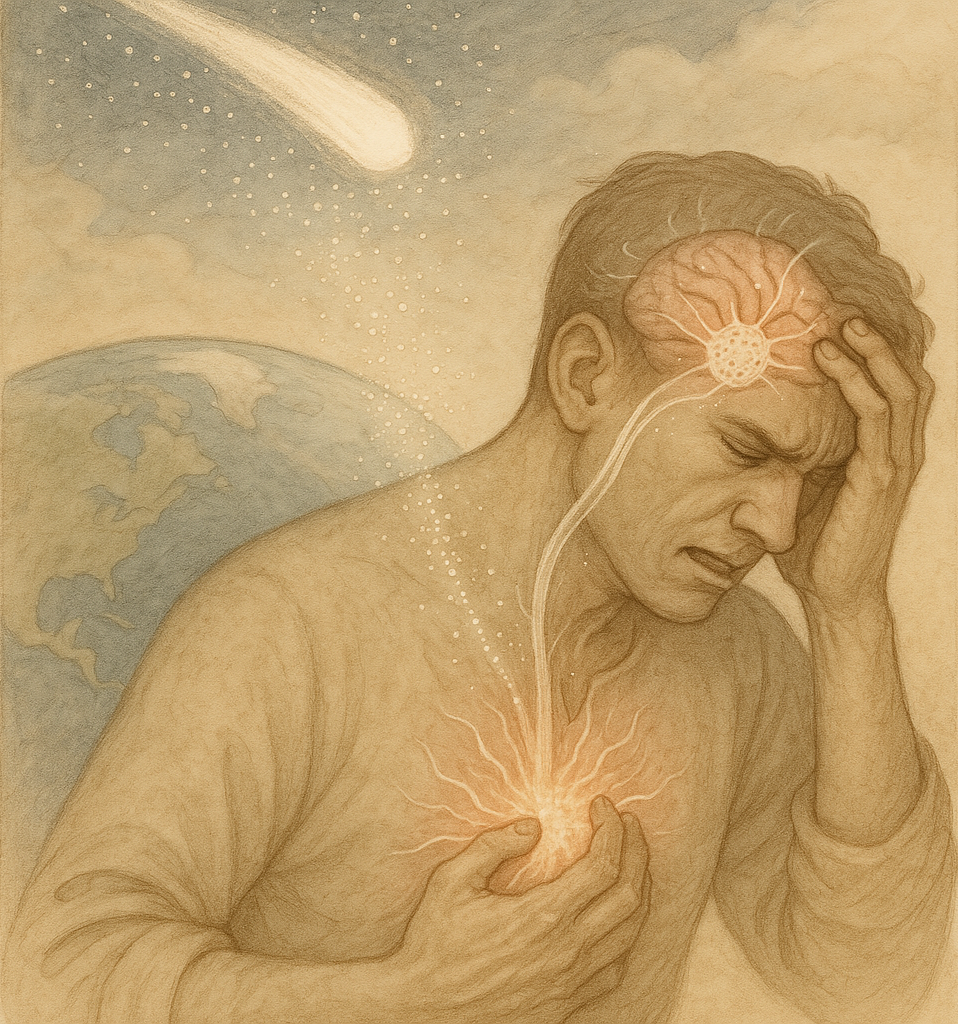
Due to its orbit, Halley’s Comet passes through its closest point to Earth every seventy-five years, scattering the fine stardust surrounding it into the planet’s atmosphere.
These photonic particles are no ordinary space dust; they possess a conscious orientation and do not stop until they come into contact with living tissue. Every living being they touch—human, animal, or plant alike—becomes a carrier of the stardust. However, its effect on humans is far more pronounced. The first symptoms after contact appear as intense pain in the brain and a burning sensation in the chest. These symptoms result from the damage the stardust causes to the amygdala region of the brain and how this damage, through the autonomic nervous system, triggers the lungs.
When stardust enters the human body, it travels directly to the amygdala—the brain’s fear center. This small but powerful region governs human fears. Upon arrival, the stardust creates what feels like a small explosion from within. It disrupts the amygdala’s normal function, even silencing parts of it. Yet this damage does not weaken the person—it opens the door to a transformation. Fear is no longer felt as it once was—but it doesn’t disappear entirely. If the individual confronts their fears, the stardust converts these emotions into a kind of energy. Thus, a person begins to draw power from what they fear most. The stronger the fear, the more advanced and precise the ability becomes. However, this transformation is not permanent. If the supply of stardust is cut off, the amygdala gradually repairs itself; fear returns, and the abilities fade away.
This "feeding" is sustained through two main methods. The first is the intravenous administration of stardust-based serums; however, this method is extremely difficult. Bottling and stabilizing the stardust with compressed gas is a complex and demanding process. The more common and primitive method is the consumption of other living beings that have come into contact with stardust. This occurs by eating the flesh of animals or plants that have become carriers of the dust. In this way, the stardust enters the bloodstream through the digestive system and continues the transformation process.